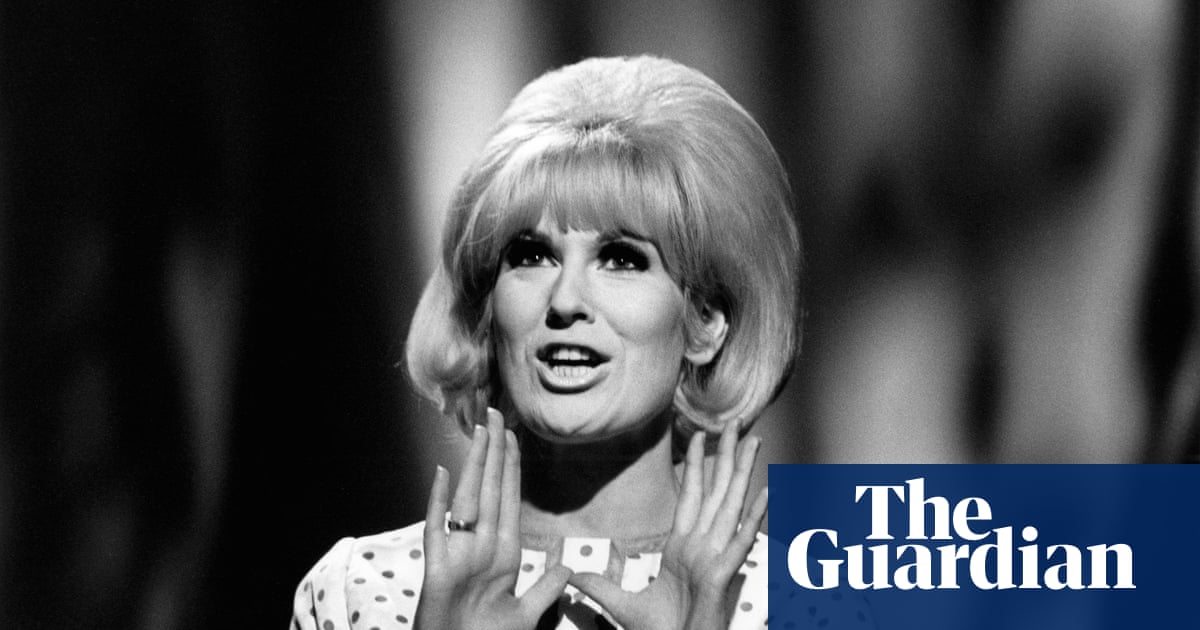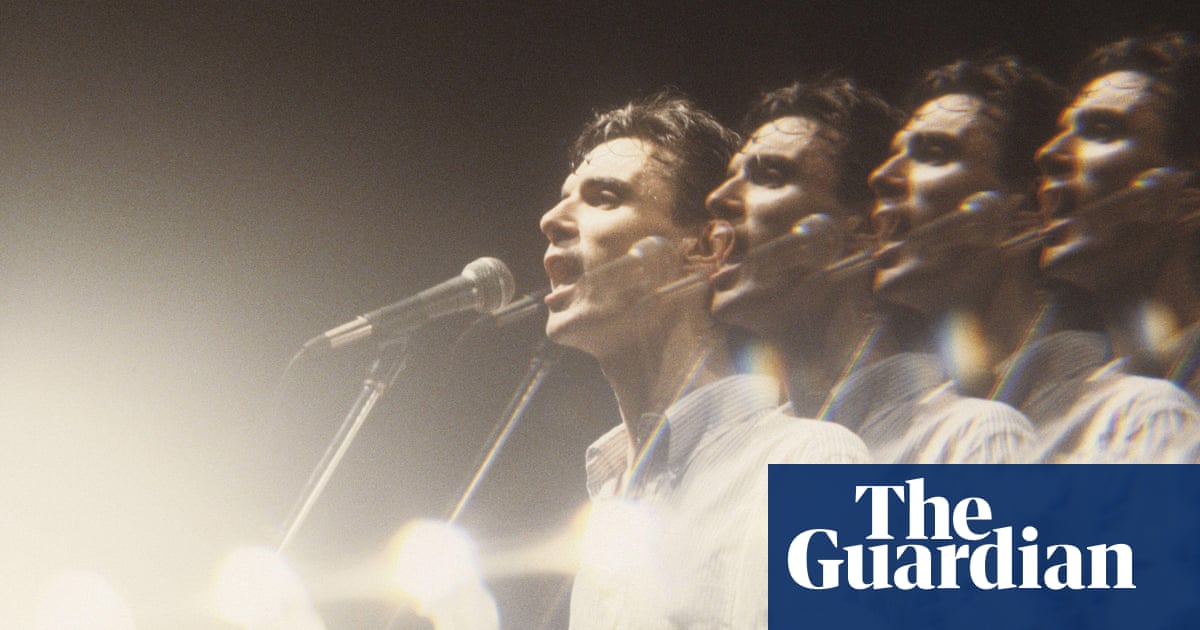
20. Quiet Please, There’s a Lady on Stage (1979)
It’s closer to a show tune than soul, but Dusty Springfield kept singing Quiet Please live during her wilderness years for a reason. The version from 1979, the year Springfield’s UK tour was cancelled due to poor sales, is particularly freighted: “She may not be the latest rage, but she’s singing and she means it … give her your respect if nothing else.”
19. Oh No! Not My Baby (1965)
In an era when albums were usually a filler-packed afterthought, Springfield’s were anything but: she clearly saw them as a chance to indulge in the music she loved, rather than simply making hits. From 1965’s Ev’rything’s Coming Up Dusty, her potent take on Maxine Brown’s recent US hit is the perfect example of what lurks in their grooves.
18. That’s the Kind of Love I’ve Got for You (1978)
A gay icon with a soulful voice, Springfield should have been a perfect fit for disco: with material as strong as That’s the Kind of Love I’ve Got for You, her failure to click seems even weirder. Anyone interested in exploring dancefloor Dusty further should check 1979’s Baby Blue and the Barry Gibb-penned Save Me, Save Me.
17. No Stranger Am I (1968)
In his superb forthcoming LGBTQ pop history, The Secret Public, Jon Savage makes a hugely convincing case for this B-side as one of Springfield’s greatest 60s performances. A delicate, lovely slice of beautifully-sung folk, written by Springfield’s then-lover Norma Tanega, listening to it feels like eavesdropping on a private, reflective moment of calm.
16. I Can’t Wait Until I See My Baby’s Face (1967)
From her third album, the brilliant Where Am I Going?, I Can’t Wait Until I See My Baby’s Face is evidence of the sheer class and sophistication Springfield brought to mid-60s pop: a great song, a fantastic arrangement – by Serge Gainsbourg cohort Arthur Greenslade – and a fabulous vocal. Heretical but true: it’s better than Aretha Franklin’s version.
15. Am I the Same Girl? (1969)
Posthumously inducting his friend into the Rock and Roll Hall of Fame, Elton John suggested Springfield could “claim any song as her own”. Here’s a case in point. She floats over Am I the Same Girl? – a ballsy decision considering original vocalist Barbara Acklin’s impassioned delivery – bringing softness and vulnerability: different, but just as good.
14. Someone Who Cares (1972)
That an album as good as Faithful went unreleased for 44 years says everything about how dramatically Springfield’s career unravelled in the 70s. Someone Who Cares snuck out via a B-side, then the outtake hodgepodge See All Her Faces: its jump from beatless ballad to tough danceability and back is really thrilling.
13. Nothing Has Been Proved (1989)
After her glorious cameo on What Have I Done to Deserve This?, the Pet Shop Boys were heavily involved with Springfield’s comeback album Reputation. The Motown-stomping In Private was the biggest hit, but this is the pick of their collaborations, a beautifully hazy reflection on the Profumo affair. Her vocal on the climactic chorus is amazing.
12. I Only Want to Be With You (1963)
A solo debut released weeks after the Springfields’ final gig and a step away from the pop-folk that had made the trio’s name, I Only Want to Be With You offered a British take on Phil Spector’s sound and a killer melody: it was hugely striking, although Springfield would quickly transcend brash pop.
11. In the Middle of Nowhere (1965)
The power of In the Middle of Nowhere lurks in the weird tension at its centre. The music swaggers along unstoppably, finger-snapping and horn-laden, and Springfield’s vocal delivery is utterly imperious, but the lyrics are full of pleading woe: shattered dreams, unrequited passion, a relationship on the rocks.
10. Let’s Talk It Over (1970)
In a more just world, 1970’s From Dusty… With Love would be mentioned in the same breath as Dusty in Memphis. It’s a superb, forward-thinking album, that explores the nascent Philly soul sound with songwriter-producers Gamble and Huff. Beautifully orchestrated, with a distinct gospel undertow, closer Let’s Talk It Over is magnificent.
9. Little By Little (1966)
Written by the same team as In the Middle of Nowhere, Little By Little essentially does the same thing – swaggering brass-heavy music, commanding in-your-face vocal, lyrical despair – but somehow improves the formula, honing it to a point of perfection: an awesome single on which misery somehow sounds like an invitation to party.
8. You Don’t Have to Say You Love Me (1966)
If Springfield could sometimes sound equivocal when discussing her biggest hit of the 60s – “schmaltz”, she once called it – she certainly didn’t sound equivocal singing it. Apparently recorded while leaning over a stairwell, her vocal is alternately fragile and – at the climax – cathartic. Amid the wilfully over-the-top arrangement, she sounds utterly believable.
7. Breakfast in Bed (1969)
You could make a convincing argument for almost any track from Dusty in Memphis to have a place on this list, but even in such exalted company Breakfast in Bed shines. It’s a wonderful piece of songwriting; moreover, her voice nails the complex cocktail of emotions – seductive, desperate, yearning, sad – at its centre.
6. I Just Don’t Know What to Do With Myself (1964)
On which Springfield first deployed her signature vocal style – “haunting, husky, full of secrets and promises” in Bette Midler’s memorable summation – and transformed a minor Bacharach-David song into a huge hit. I Just Don’t Know What to Do With Myself is perfectly poised: dramatic, but never melodramatic.
5. Goin’ Back (1966)
The definitive reading of a Goffin-King song essayed by everyone from Diana Ross to the Byrds, whose David Crosby balked at recording what he considered Brill Building fluff. Perhaps he hadn’t heard Springfield’s version, which is anything but fluffy: it yearns and aches, a stunning direct hit to the heart.
4. The Look of Love (1967)
Originally featured on the soundtrack to Casino Royale, Springfield’s second hit version of The Look of Love pared the song down slightly, and somehow managed to up its sensuality. Her voice sounds almost impossibly direct and intimate, as if someone had draped pillow talk over a bossa nova rhythm.
3. I Close My Eyes and Count to Ten (1968)
British songwriter Clive Westlake’s efforts were largely aimed at the easy-listening market – Cilla Black, Anita Harris – but I Close My Eyes and Count to Ten is too gripping and dramatic to warrant that label. Its emotions surge and ebb, dragging the listener along, amplified by Springfield’s perfectly judged vocal: a masterpiece.
2. Some of Your Lovin’ (1965)
Apparently Springfield’s favourite of her own singles, Some of Your Lovin’ is just superb: a sumptuous Goffin-King girl group ballad (originally sung by the Honey Bees) given a layer of grownup sophistication. It sounds not unlike a dry run for, or a pointer towards, the peerless Dusty in Memphis.
1. Son of a Preacher Man (1968)
It might have been the album she was born to make, but the sessions for Dusty in Memphis were famously fraught: at least one observer has suggested that the insecure singer had to be dissuaded from quitting long before work was finished. It’s hard to believe though, when you hear Son of a Preacher Man, which is the kind of song on which everything – lyric, vocal, melody, beautifully restrained arrangement; smouldering, carnal atmosphere – clicks smoothly into place. It is perfection that sounds like it was achieved without breaking a sweat. That it was anything but only adds to its inarguable greatness.












